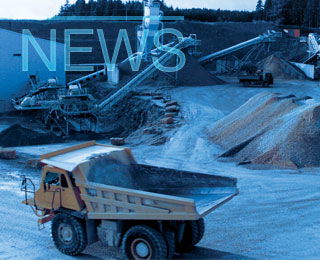Brazilian total cement sales declined by 3.8 per cent YoY to 5.5Mt, according to the country’s cement association, SNIC. Per working day, sales fell by 3.5 per cent YoY to 238,000t.
Within Brazil sales reached 5.483Mt, down 3.5 per cent YoY, in September 2022. The country’s second-largest market, the northeast, saw the largest fall with sales down six per cent to 1.098Mt in September 2022 from 1.168Mt in September 2021. The southeast and southern markets contracted by 3.9 per cent to 2.522Mt and 0.911Mt, respectively, in September 2022. In the central-west, market contraction was smaller at 1.6 per cent and sales reached 0.686Mt. the north was the only market to see an advance, of 8.6 per cent, to 0.266Mt YoY in September 2022.
In terms of exports, sales volumes shrank by 31.1 per cent YoY to 42,000t in September 2022 from 61,000t.
January-September 2022
In the first nine months of 2022, domestic cement sales decreased three per cent YoY to 47.7Mt.
The country’s key markets posted the largest drop, with cement sales in the southeast down 4.4 per cent to 21.929Mt while in the northeast deliveries fell by five per cent to 9.328Mt YoY in September 2022. Sales in the south slipped by 0.9 per cent to 8.268Mt. However, in the central-west deliveries were up 1.6 per cent YoY to 5.78Mt in September 2022. In the north, there was an uptick of two per cent YoY to 2.134Mt.
Export volumes saw a 13 per cent YoY decline to 0.308Mt in the 9M22 from 0.354Mt in the 9M21.
Outlook
Going forward, a recovery of jobs and GDP as well as the cooling of inflation are expected to contribute to a slowing down of the fall in sales to two per cent.
In addition, the consumer index increased in September for the fourth-consecutive month, reaching its highest levels since January 2020 and the construction index reached its highest level since November 2012. However, not all construction segments advanced in the same direction. Buildings recovered, but there was a drop in infrastructure activity.
“In order to resume growth in the sector, investment in urban and infrastructure development is necessary. It is essential to increase the presence of cement in housing programs, such as the use of concrete walls, which brings gains in productivity and sustainability for civil construction. In addition, it is essential to include concrete pavement as an option in public bids for streets and highways, as it is a more durable, more economical construction method that has the least environmental impact and also brings comfort and safety to users,” said SNIC President, Paulo Camillo Penna.

Cement demand recovering in Vietnam
Cement dispatches in Vietnam increased by 22 per cent YoY to 7.828Mt in March 2025, according to...